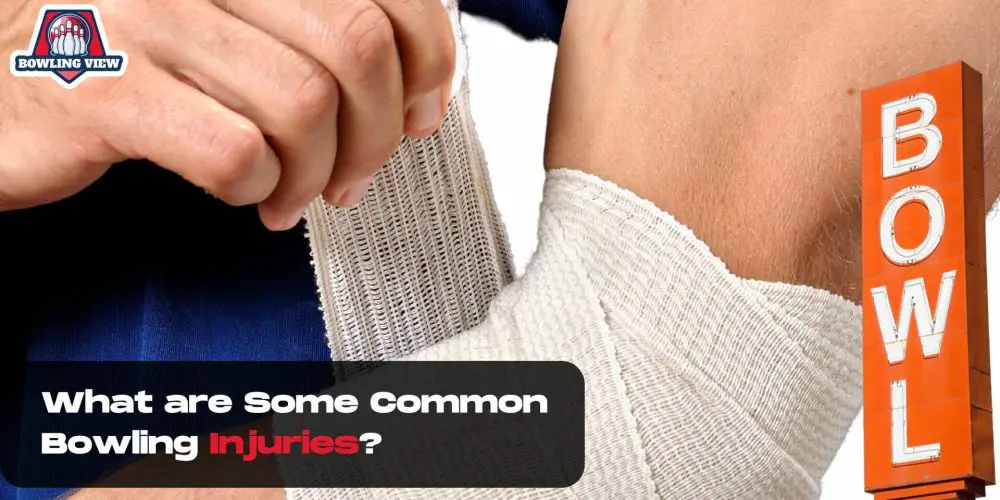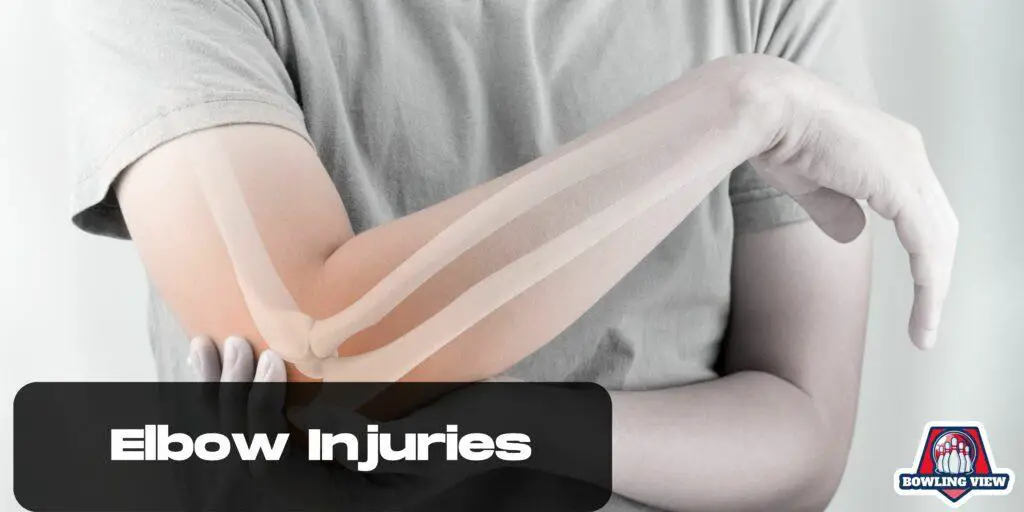Bowling is a popular recreational and competitive sport enjoyed by millions worldwide. While it may not seem as physically demanding as other sports, bowling still poses a risk for injuries.
Common bowling injuries occur in various parts of the body, including the fingers, wrist, arm, shoulder tendons, and lower back. Understanding the causes and prevention methods can help bowlers of all skill levels stay on the lanes and out of the doctor’s office.
Overuse and improper technique are key factors that contribute to bowling injuries. Repetitive motions, excessive force, or poor body mechanics can lead to strain and stress on muscles, tendons, and ligaments.
Additionally, ill-fitting equipment, such as shoes or bowling balls, can exacerbate the risk of injury.
Some common bowling injuries include ligament sprains, tendonitis, and muscle strains, especially in the wrist, forearm, and lower back. By recognizing the causes and symptoms of these injuries, bowlers can take proactive steps to avoid them and ensure that they continue to enjoy the sport without compromising their health.
Common Bowling Injuries
Wrist Injuries
Wrist injuries are the most common injuries in bowling due to the repetitive motion and strain on the joint. Carpal tunnel syndrome and wrist tendonitis can develop from overuse, leading to pain, numbness, and weakness in the wrist and hand. Proper wrist support and technique can help prevent this injury.
Shoulder Injuries
Shoulder injuries are another common issue for bowlers, as the repetitive throwing motion can lead to conditions such as shoulder tendonitis.
This inflammation of the tendons can cause pain and a limited range of motion. Rotator cuff tears may also occur from overuse or improper technique, causing severe pain and requiring medical intervention. Proper stretching and strengthening exercises can help prevent these injuries.
Elbow Injuries
Elbow pain is a common complaint among bowlers. A frequent cause of sharp pain is “bowler’s elbow,” a form of tendonitis affecting the inner or outer part of the elbow.
Similar to tennis elbow, bowler’s elbow results from repetitive stress on the joint and can be mitigated through proper technique and rest.
Finger and Thumb Injuries
Fingers and thumbs are also at risk in bowling. Inadequate ball fit, poor grip technique, or excessive use can lead to pain and swelling in these areas.
Common injuries include ligament or tendon strains, joint inflammation, and even fractures. Proper gear and careful attention to form can go a long way in preventing these injuries.
Back Injuries
Lower back pain is another frequent issue for bowlers. This pain can result from the twisting motion of the spine during the delivery and follow-through of a shot. Activities such as lifting the bowling ball up, bending over to pick up a ball, and twisting while releasing the bowling ball, can put strain on the lower back muscles and ligaments. Proper technique, regular stretching, and strength training can help prevent lower back pain in bowlers.
Causes of Injuries
Bowling injuries can be attributed to various factors, including form, muscle strain, tendonitis, and too much force exerted during the swing. This section will examine some of these common causes of injuries in bowlers.
Improper form is a leading cause of injuries in bowling. Bowlers who do not maintain a consistent and well-coordinated arm swing may put undue stress on their arm muscles and tendons. This can lead to strain and inflammation in the involved body parts, particularly the hand, wrist, and forearm.
Muscle imbalances and weakness can contribute to bowling injuries. Overusing certain muscles while neglecting others can lead to imbalances and overexertion.
Some frequently affected muscles in bowlers include the forearm and wrist flexors and the shoulder girdle muscles.
Tendonitis is another common bowling injury. It involves the inflammation of the tendons, connective tissues that attach muscles to bones.
In bowlers, tendonitis can occur in areas such as the wrist, elbow, and shoulder. A specific type of tendonitis called lateral epicondylitis, also known as “bowler’s elbow,” affects the tendons that extend the wrist and fingers.
This condition is caused by repetitive forceful wrist and finger extension motions, which can inflame the tendons and result in pain and discomfort.
Sprains are yet another issue for bowlers. A sprain occurs when a ligament, the fibrous tissue that connects bones to one another, is stretched or torn. Bowlers may experience sprains in their fingers, wrists, and ankles due to excessive force or poor techniques during the swing, release, and follow-through.
In summary, most common bowling injuries can be caused by improper form, muscle imbalances, tendonitis, and sprains. By addressing these issues and practicing proper techniques, bowlers can reduce their risk of injury and enjoy the sport safely.
Preventing Bowling Injuries
Proper Techniques
One of the most effective ways to prevent bowling injuries is by maintaining proper form. Bowlers should focus on a smooth and controlled approach, ensuring they release the ball correctly to avoid strain on the wrist or fingers. A common issue faced by bowlers is “bowler’s thumb,” which occurs when the thumb becomes trapped in the thumb hole. To minimize this problem, it’s essential to have the right size thumb hole and learn the correct method of gripping and releasing the ball.
Support and Stretching
Preventing bowling injuries is not only about perfecting your technique but also about taking care of your body. Support and stretching play a critical role in injury prevention. Having a good warm-up routine, including flexibility exercises such as leg swings, can help prepare the muscles and joints for the repetitive motions of bowling. Additionally, a proper cool-down session, focusing on stretching the muscles used during bowling, will aid in recovery and prevent injuries.
Some beneficial stretches and exercises for bowlers include:
- Shoulder rolls
- Arm circles
- Wrist flexor and extensor stretches
- Calf stretches
- Leg swings
Bowling Gear
Using the right bowling gear can greatly contribute to injury prevention.
For instance, wearing a bowling thumb sock can help protect against bowler’s thumb by providing a smooth surface for the thumb to slide in and out without getting stuck.
It is also essential to choose a ball with the correct weight for the individual bowler, as using a ball that is too heavy can lead to unnecessary repetitive strain, and injuries.
Lastly, investing in comfortable and supportive shoes will help maintain proper form and reduce fatigue, further reducing the likelihood of injuries.
Treatment and Recovery
When dealing with common bowling injuries, the first step towards treatment and recovery is often rest. Allowing the injured area to heal is crucial in preventing further damage or complications. For minor injuries, the RICE method (Rest, Ice, Compression, Elevation) is widely recommended to alleviate pain and swelling.
Physical therapy plays a significant role in recovery, particularly for those experiencing shoulder pain or lateral epicondylitis (also known as “bowler’s elbow”). A qualified physical therapist can provide targeted exercises and stretches to help strengthen and rehabilitate the affected area. In some cases, wearing a support brace or strap may also offer additional stability during physical therapy, and daily activities.
Prompt diagnosis is essential when it comes to treating bowling injuries effectively. Consulting a medical professional for a proper evaluation ensures that the appropriate treatment plan is followed. For example, if straining of the muscles or tendons is diagnosed, the prescribed treatments may comprise strengthening exercises or temporary activity modifications.
In some situations, surgery might be necessary to repair more severe damage or to address chronic pain. Discontinue bowling, and follow any post-operative care instructions given by the surgeon or medical staff during the recovery period to facilitate safer, faster healing.
As a part of the recovery process, be aware of the pain levels throughout. Pain is a helpful indicator that something is wrong or requires medical attention. Avoid pushing through pain or discomfort, as doing so may exacerbate the initial injury or prolong the recovery time. Remember, patience and diligence in following the prescribed course of action are essential components in the journey back to optimal health and performance on the bowling lanes.



